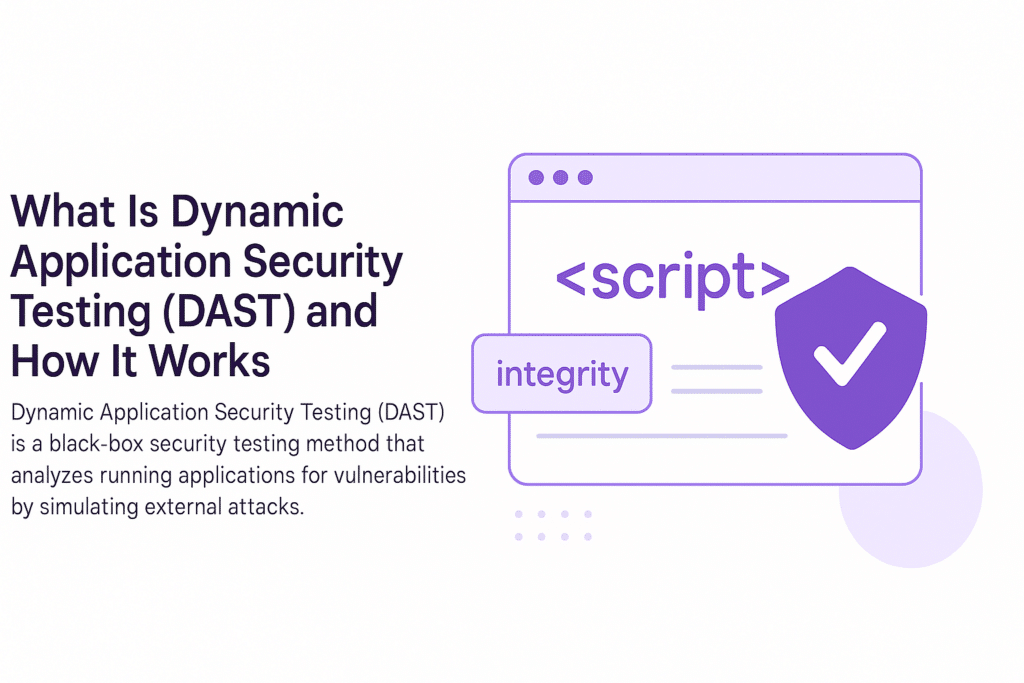Summary
Dynamic Application Security Testing (DAST) is a black-box security testing method that analyzes running applications for vulnerabilities by simulating external attacks. It helps organizations identify real-world threats and strengthen their security posture.

What Is Dynamic Application Security Testing (DAST)?
Dynamic Application Security Testing (DAST) is a security testing methodology that evaluates web applications in their running state. Unlike static testing methods, DAST simulates real-world attacks without access to the application’s source code, identifying vulnerabilities that manifest during runtime.
How It Works
Dynamic Application Security Testing (DAST) operates by interacting with a live application, sending various inputs to its interfaces, and analyzing the responses for unexpected behaviors that may indicate security flaws. This approach allows testers to identify vulnerabilities such as SQL injection, cross-site scripting (XSS), and authentication issues.
Who’s at Risk
Organizations deploying web applications accessible over the internet are particularly at risk. Industries like e-commerce, finance, healthcare, and SaaS, which handle sensitive user data, must ensure their applications are secure against potential exploits that Dynamic Application Security Testing (DAST) can uncover.
Real-World Examples
- Park ‘N Fly: Integrated a DAST solution to enhance the security of their internal applications and kiosk systems, leading to improved DevSecOps efficiency.
- Global E-Commerce Platform: Faced with significant SQL injection vulnerabilities, the company implemented a DAST tool, automating vulnerability scans and integrating them into their CI/CD pipeline.
How to Detect or Prevent It
To effectively utilize DAST:
- Define the Scope: Identify which parts of the application to test, including APIs and user interfaces.
- Automate Scans: Integrate DAST tools into the CI/CD pipeline to ensure continuous security testing.
- Combine with Other Testing Methods: Use DAST alongside Static Application Security Testing (SAST) and manual code reviews for comprehensive coverage.
How Feroot Helps
Feroot offers client-side security solutions that complement DAST by monitoring and protecting against vulnerabilities in the browser environment. Our tools provide visibility into third-party scripts and help enforce security policies, ensuring a robust defense against client-side threats.
FAQ
How does DAST differ from SAST?
DAST analyzes applications in their running state without access to source code, identifying vulnerabilities that occur during execution. SAST examines source code for potential flaws without executing the program.
Can DAST detect all types of vulnerabilities?
While DAST is effective at finding runtime vulnerabilities, it may not detect issues in the application’s internal logic or source code. Combining DAST with other testing methods provides more comprehensive coverage.
Is DAST suitable for all types of applications?
DAST is most effective for web applications accessible over the internet. Applications with complex user interactions or those that heavily rely on client-side scripts may require additional testing methods.
How often should DAST be performed?
Regularly integrating DAST into the development lifecycle, especially within CI/CD pipelines, ensures continuous monitoring and timely identification of new vulnerabilities.


